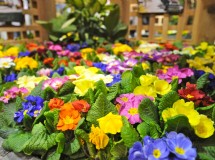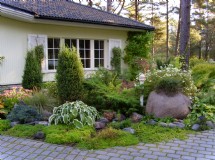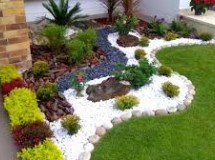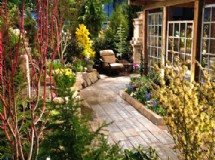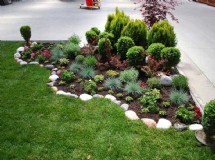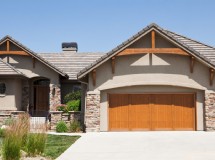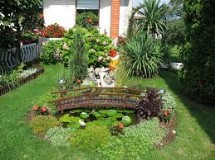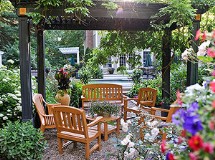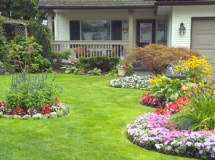- The dogwood flower, or rather, the combined size of the bracts that surround dogwood flowers, ranges from 3 to 4 inches. Dogwoods generally grow to a height of 20 to 30 feet and are wider than than they are tall, according to the North Carolina State University Cooperative Extension. However, height depends on the dogwood variety and other factors. For example, the flowering dogwood (Cornus florida) grows 15 to 25 feet in height but can grow 30 to 40 feet high in wooded areas with dappled shade.
- Dogwoods can be somewhat particular about where they grow and need conditions that offer protection from too much sun, shade, water and harsh winds. In the wild, dogwoods thrive under tall pine or other hardwood trees or on the edge of a forest, where they receive adequate amounts of shade and sunlight, high humidity and protection from drying winds. This benefits their shallow roots as do the leaves that drop each year from the trees around them. Few dogwoods grow well in full sun, deep shade or in poorly drained soil.
- The North Carolina State University Cooperative Extension recommends purchasing a named dogwood variety from your local garden center. Success with growing a dogwood is greater if the tree is selected for its good root system, rather than being selected because it is the largest tree. Select container-grown dogwoods with healthy white root systems that are not root-bound in the pot. The University of Georgia College of Agricultural & Environmental Sciences recommends choosing both bareroot and balled and burlapped trees with root systems protected from drying out by being "heeled-in," or temporarily planted in moist sawdust or other organic materials, until planted in a permanent spot.
- With their shallow roots, good soil drainage and protection from drought are dogwood necessities. If soil drainage is poor, plant the dogwood in a raised bed. According to the University of Georgia, dogwoods thrive best when planted underneath larger trees that provide moderate shade. Avoid hot, dry locations, which will stunt dogwood growth. Avoid providing too much dense shade as that will result in poor flowering. Plant dogwoods near rhododendrons, azaleas or other spring-flowering shrubs for added color and more landscape interest.
- If you are planting dogwoods in a bed with other plants, till the entire bed to a depth of 6 inches and add soil amendments, if desired. If you're planting the dogwoods alone, dig holes at least 3 to 5 times the width of the root balls. Place each plant in the hole and fill it up, gently tamping in soil until the hole is two-thirds full. Add water to remove air pockets then shovel in the remaining soil. Lay out 2 to 3 inches of mulch, such as pine bark, hardwood wood chips or compost, but keep mulch a few inches away from the trunk. Provide mulch 2 feet in diameter for each inch in trunk diameter. Until the dogwood is established, water it regularly during dry periods. Dogwoods require at least 1 inch of water a week, either from a hose, rainfall or a combination of the two.
Dogwood Tree Size
Natural Habitat
Selecting Trees
Planting Location
Planting Dogwoods
SHARE

